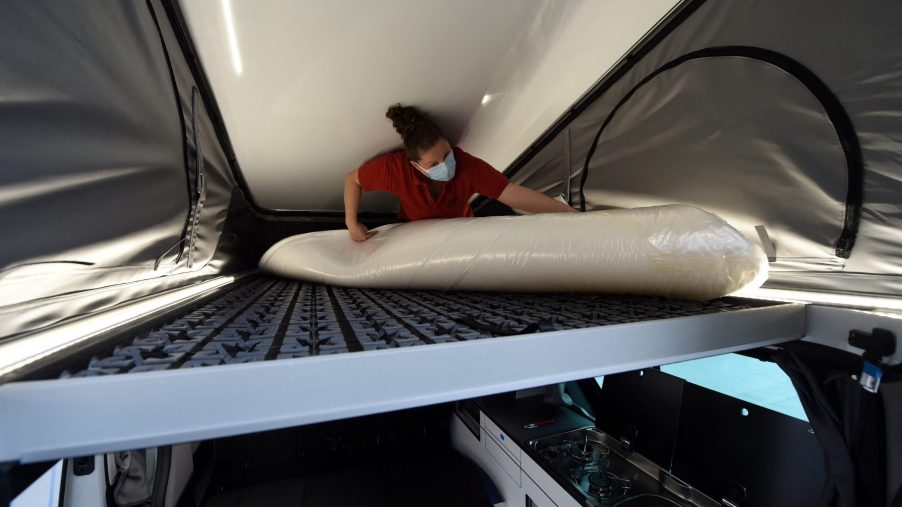
How Much Does Van Life Cost a Month?
Many have dreamed of traveling across the country in an RV, camper, or van. Since the pandemic, many have decided it’s time to do just that. Vans and motorhomes offer a way to travel and social distance while we wait out the ongoing pandemic. How much would life on the road in a van cost exactly? Is van life really that affordable? We’ve got all the details.
What does it cost to convert a van and move into it?
There’s no quick and easy answer to that. It depends on the individuals. The cost will be different for everyone.
Your first consideration will be the type of vehicle you buy as it will be your biggest immediate cost. Many who are considering van life already own one. With little effort, they are all ready for you to enjoy extended travel periods.
Otherwise, people spend an average of $45,000, according to Parked in Paradise for a 4WD Mercedes-Benz Sprinter van. Add another $15,000 on top of that for what they call a high-tech camper-van conversion. While such stories are common on social media, it’s far from what you actually need to live out of a van.
In truth, the conversion can be as inexpensive, or expensive, as you wish. There are many comfort or luxury features available like self-contained toilets, solar power, and large refrigerator units that are nice to have. But you don’t necessarily need them. It’s wiser to stick to a budget and keep some money back in case of an emergency.
What are the monthly costs of the van life?
For most reading or learning about van life, living on the road “rent-free” sounds good, right? If you own your vehicle, you don’t have to pay rent. But there are plenty of other expenses to keep in mind like food, gas, insurance, and more.
If you’re frugal and willing to stay at free campsites, cook your own meals, and don’t need to spend a lot of money on entertainment, you’ll keep costs down. Otherwise, paying for campsites and visiting touristy destinations can bust your budget quickly.
As Parked in Paradise explains, some can live on the road for a mere $850 per month. They explained that one couple who made that work stayed at free campsite locations, didn’t travel often to save on fuel costs, and used creativity to keep food prices down.
Instead of using solar power, the couple runs a generator four hours a day to charge devices and take care of the needs they need electricity for. At the end of the month, they’ve spent about $850 which is reasonable.
The $2,000+ per month van life
There are some that live on the road to the tune of $2,000 or more each month. Keep in mind that includes coffee, meals at restaurants, groceries, health insurance, investments, internet, gas, gym memberships, and more. There are also a lot of van life scams you’ll want to avoid.
Many of these folks work on the road which helps them afford restaurant meals and tourist attractions. They are more likely to travel greater distances and to move around quite a bit more than someone who lives van life for $850 a month.
Another vital thing to have is money for emergencies. When you’re living in a moving vehicle, eventually you’re going to need to have repairs made or buy replacement parts. Waiting for parts or services can keep you in place for up to a week.
When you live in a van it’s both your home and mode of transportation. If it breaks down, it impacts both. The more you paid for the vehicle, the more expensive parts will be.
You should at minimum have enough money to have your van towed, for a hotel stay for a few days, and food.
Each van life experience is as unique as the people living it. But there are ways to keep costs down if that’s a life you’d like to try for a time. By making your own meals, avoiding tourist attractions, and getting creative, you can save money and enjoy the great outdoors on the adventure you’ve often thought about.


